Crypto HODL: The Long-Term Investment Strategy for Building Wealth in 2025
%201.svg)
%201.svg)

Introduction to HODL
If you’ve spent any time in cryptocurrency communities, you’ve likely seen the term HODL. Originally a misspelling of “hold” on an online Bitcoin forum in 2013, HODL has become much more than a typo—it’s now a core investment philosophy for crypto enthusiasts worldwide.
In 2025, HODLing remains one of the most effective long-term strategies for building wealth in cryptocurrency. By holding onto fundamentally strong assets through market volatility, investors can capture long-term gains while avoiding emotional, short-term trading mistakes. This article explores what HODLing means, why it works, the best assets to HODL, and how platforms like Token Metrics can help optimize your strategy.
What Does HODL Mean?
HODL means buying and holding cryptocurrency for an extended period, regardless of short-term price fluctuations. Unlike traders who attempt to time the market, HODLers adopt a long-term mindset, trusting that the value of quality assets will increase over time.
This strategy is rooted in the belief that blockchain technology and digital assets are here to stay, and that short-term market noise shouldn’t derail long-term conviction.
The Psychology Behind HODLing
Crypto markets are notoriously volatile, with sudden price swings that can lead to emotional decision-making. HODLing combats this by:
- Avoiding Panic Selling: Reducing the risk of selling at a loss during downturns.
- Maintaining Discipline: Encouraging investors to stick to their long-term plans.
- Embracing Market Cycles: Understanding that crypto goes through bull and bear phases, but strong assets tend to recover and grow over time.
By committing to HODLing, investors can overcome emotional biases and stay focused on their long-term goals.
Why HODL Works in 2025
- Capturing Long-Term Gains:
Historically, assets like Bitcoin and Ethereum have rewarded long-term holders with substantial returns, despite short-term volatility. - Lower Trading Costs:
By minimizing active trading, HODLers save on transaction fees and reduce tax implications from frequent trades. - Compounding Growth:
Holding allows you to benefit from price appreciation and participate in opportunities like staking or earning yield on your crypto. - Simplicity:
HODLing is straightforward—buy quality assets, store them securely, and wait.
Best Cryptocurrencies to HODL in 2025
While any coin can be HODLed, the best long-term candidates are projects with strong fundamentals, proven track records, and growing ecosystems:
- Bitcoin (BTC):
Known as digital gold, Bitcoin remains the most secure and widely adopted cryptocurrency, making it a cornerstone of any HODL portfolio.
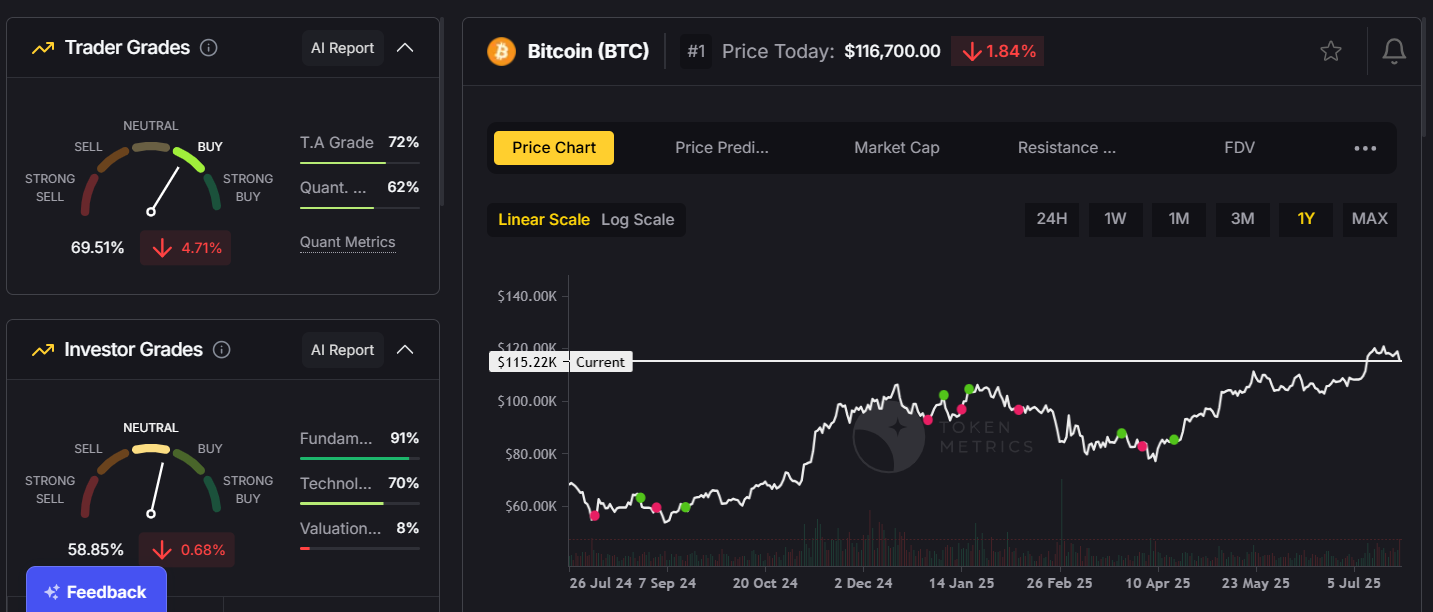
- Ethereum (ETH):
As the leading smart contract platform, Ethereum powers thousands of decentralized applications and remains a dominant force in DeFi and NFTs.
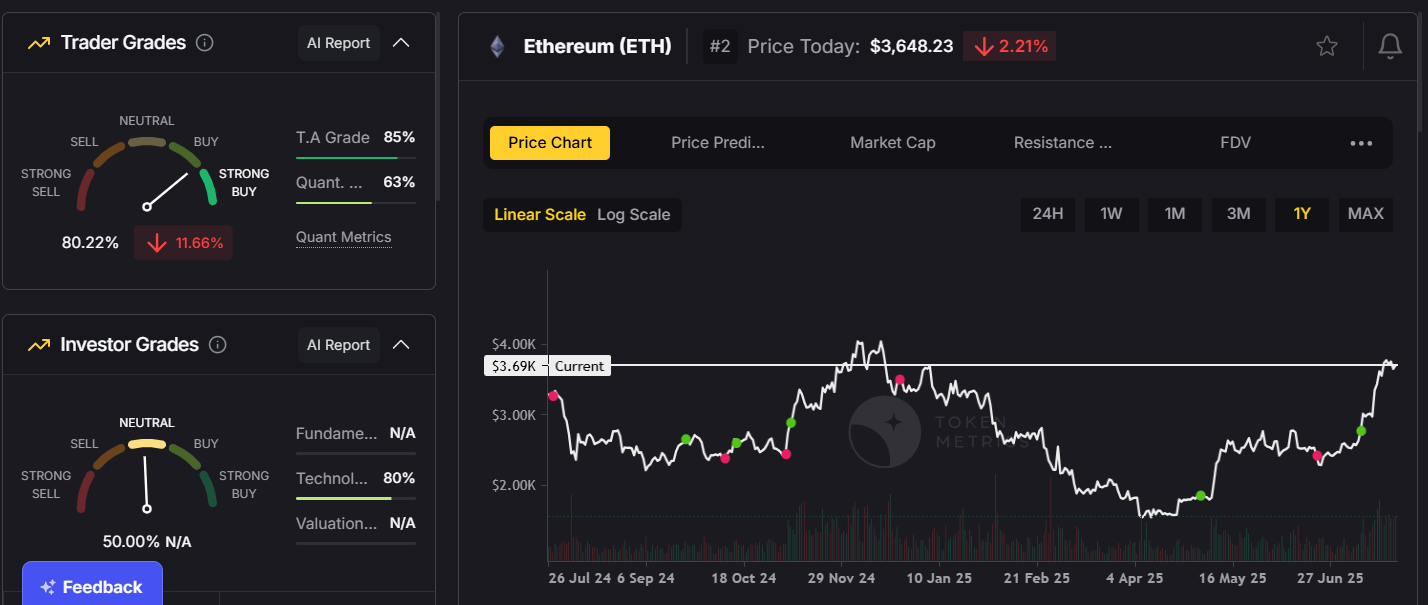
- Token Metrics AI (TMAI):
An innovative AI-driven analytics token that combines blockchain and artificial intelligence, helping investors make smarter decisions.
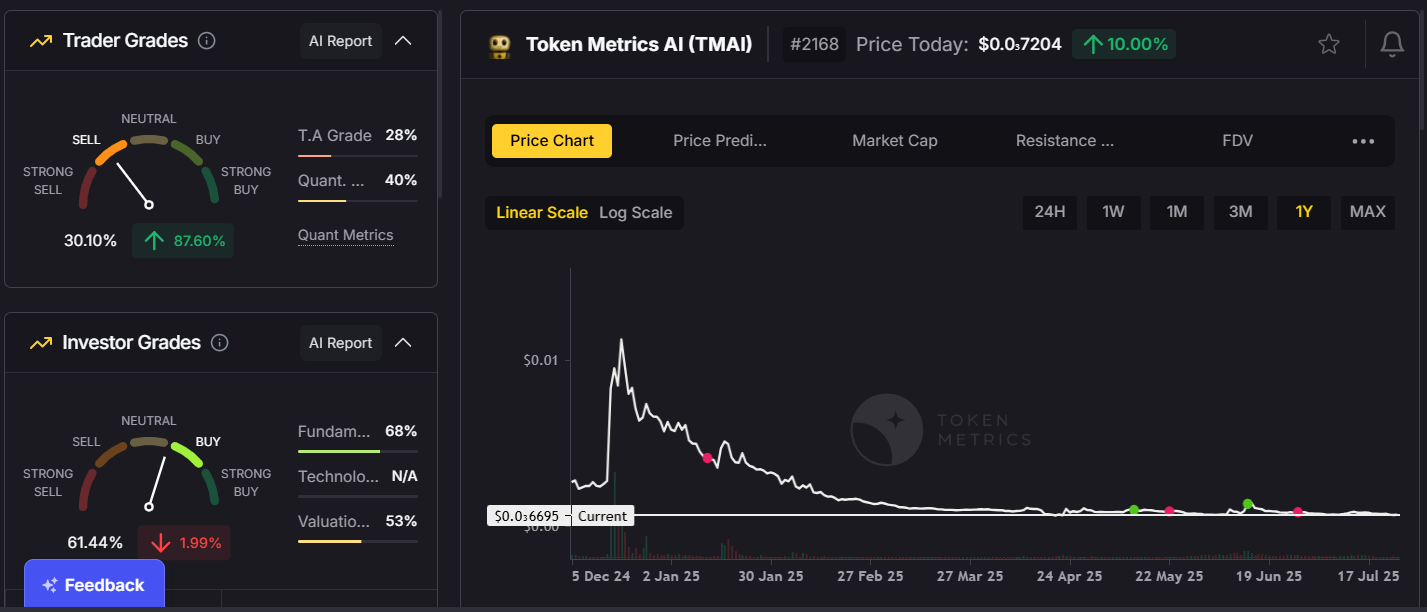
- Polygon (MATIC) and Arbitrum (ARB):
Scaling solutions with growing adoption and strong developer ecosystems.
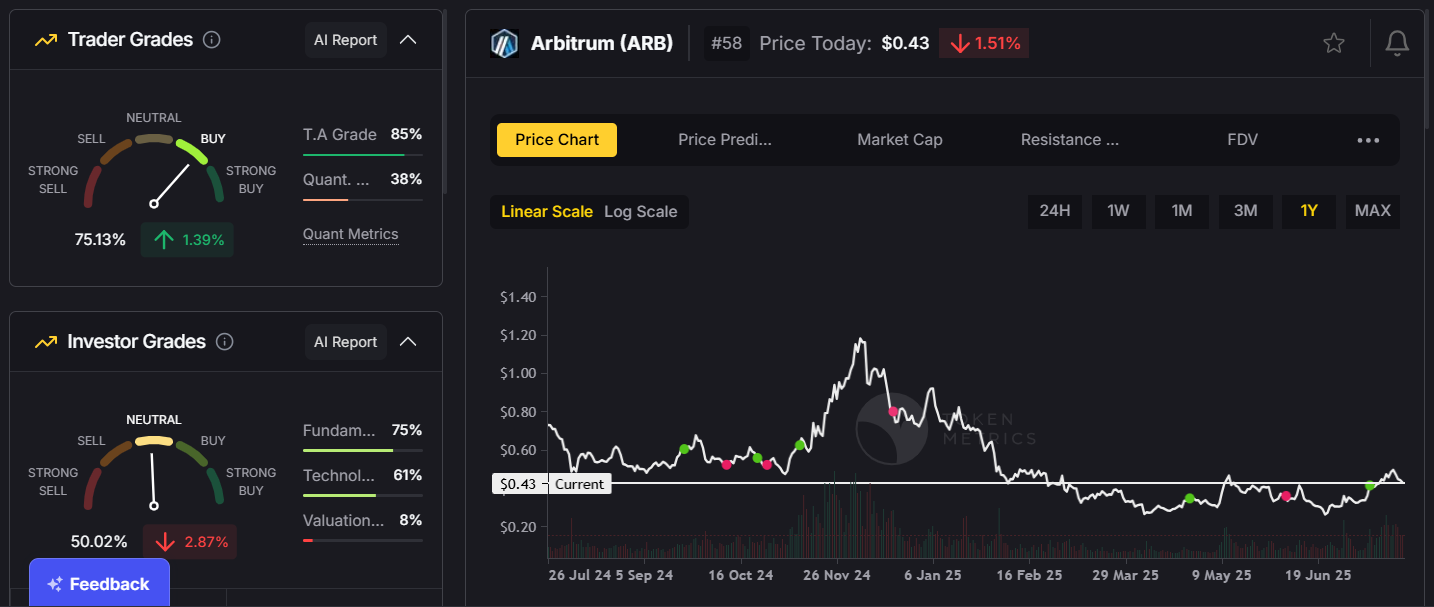
These coins offer long-term growth potential, making them excellent candidates for a HODL strategy.
How to Build a Successful HODL Strategy
- Do Your Research:
Focus on coins with real-world utility, active development teams, and strong communities. - Diversify Your Holdings:
Don’t put all your funds into one asset. Balance between large-cap (BTC, ETH) and emerging tokens (AI coins, Layer 2 solutions). - Use Token Metrics for Insights:
Leverage AI-powered analytics to evaluate assets, get coin ratings, and track portfolio performance. Token Metrics provides data on over 80 key metrics per token, helping you choose the right assets to HODL. - Secure Your Assets:
Use hardware wallets for long-term storage and enable two-factor authentication (2FA) on exchange accounts. - Rebalance Periodically:
While HODLing implies holding for the long term, periodic rebalancing ensures your portfolio remains aligned with your investment goals.
HODLing vs. Active Trading
While active trading can generate quick profits, it also comes with higher risks and costs. Here’s how HODLing compares:
- Less Stressful: You’re not glued to charts or reacting to every market dip.
- Lower Fees: Fewer transactions mean reduced trading costs.
- Higher Long-Term Success: Most active traders underperform long-term HODLers over extended periods.
Platforms like Token Metrics can complement both approaches by providing trading signals and long-term portfolio analytics, helping you decide when (and if) you should adjust your positions.
Risks of HODLing
While HODLing is effective, it’s not without challenges:
- Extended Bear Markets: Prices may stay low for months or years.
- Project Failures: Some tokens may not survive long term, making research critical.
- Opportunity Cost: Holding may cause you to miss out on short-term trading opportunities.
To mitigate these risks, rely on data-driven tools like Token Metrics to ensure you’re holding the right mix of assets.
The Role of Token Metrics in HODLing
Token Metrics is a powerful platform for long-term crypto investors, providing:
- AI-Driven Coin Ratings: Helping you identify which assets are worth holding.
- Trend Analysis: Detecting when market conditions shift.
- Portfolio Optimization: Offering insights to keep your HODL strategy on track.
By leveraging AI analytics, Token Metrics makes HODLing smarter, ensuring you’re invested in assets with strong fundamentals and growth potential.
Practical Tips for HODLers
- Start with Blue Chips: Build a foundation with Bitcoin and Ethereum.
- Add Growth Assets: Include promising altcoins like TMAI and Layer 2 scaling tokens.
- Ignore Market Noise: Stay focused on the big picture.
- Set Clear Goals: Define your time horizon and risk tolerance.
- Stay Informed: Use platforms like Token Metrics to monitor your portfolio and adjust as needed.
Conclusion
HODLing isn’t just a meme—it’s a time-tested strategy for building wealth in crypto. By holding onto fundamentally strong assets, you can capture long-term growth while avoiding the emotional traps of active trading.
In 2025, pairing HODLing with AI-powered insights from Token Metrics gives you an edge—helping you select the right assets, manage risk, and stay committed to your investment plan. Whether you’re a beginner or a seasoned investor, HODLing remains one of the simplest and most effective ways to build wealth in the dynamic world of cryptocurrency.
AI Agents in Minutes, Not Months


Create Your Free Token Metrics Account





.png)
Recent Posts

Top Smart Contract Auditors (2025)
%201.svg)
%201.svg)
Why Smart Contract Security Auditors Matter in September 2025
Smart contracts are the critical rails of DeFi, gaming, and tokenized assets—one missed edge case can freeze liquidity or drain treasuries. If you’re shipping on EVM, Solana, Cosmos, or rollups, smart contract auditors provide an independent, methodical review of your code and architecture before (and after) mainnet. In one line: a smart contract audit is a systematic assessment of your protocol’s design and code to find and fix vulnerabilities before attackers do.
This guide is for founders, protocol engineers, PMs, and DAOs comparing audit partners. We combined SERP research with hands-on security signals to shortlist reputable teams, then selected the best 10 for global builders. Secondary considerations—like turnaround time, formal methods, and public report history—help you match the right firm to your stack and stage.
How We Picked (Methodology & Scoring)
- Liquidity (30%) – We favored firms that regularly secure large TVL protocols and L2/L3 infrastructure (a proxy for real-world risk tolerance).
- Security (25%) – Depth of reviews, formal methods, fuzzing/invariants, internal QA, and disclosure practices.
- Coverage (15%) – Chains (EVM, Solana, Cosmos, Move), ZK systems, cross-chain, and infra.
- Costs (15%) – Transparent scoping, rate signals, and value versus complexity.
- UX (10%) – Developer collaboration, report clarity, suggested fixes.
- Support (5%) – Follow-ups, retests, and longer-term security programs.
Data inputs: official service/docs pages, public audit report portals, rate disclosures where available, and widely cited market datasets for cross-checks. Last updated September 2025.
Top 10 Smart Contract Auditors in September 2025
1. OpenZeppelin — Best for Ethereum-native protocols & standards
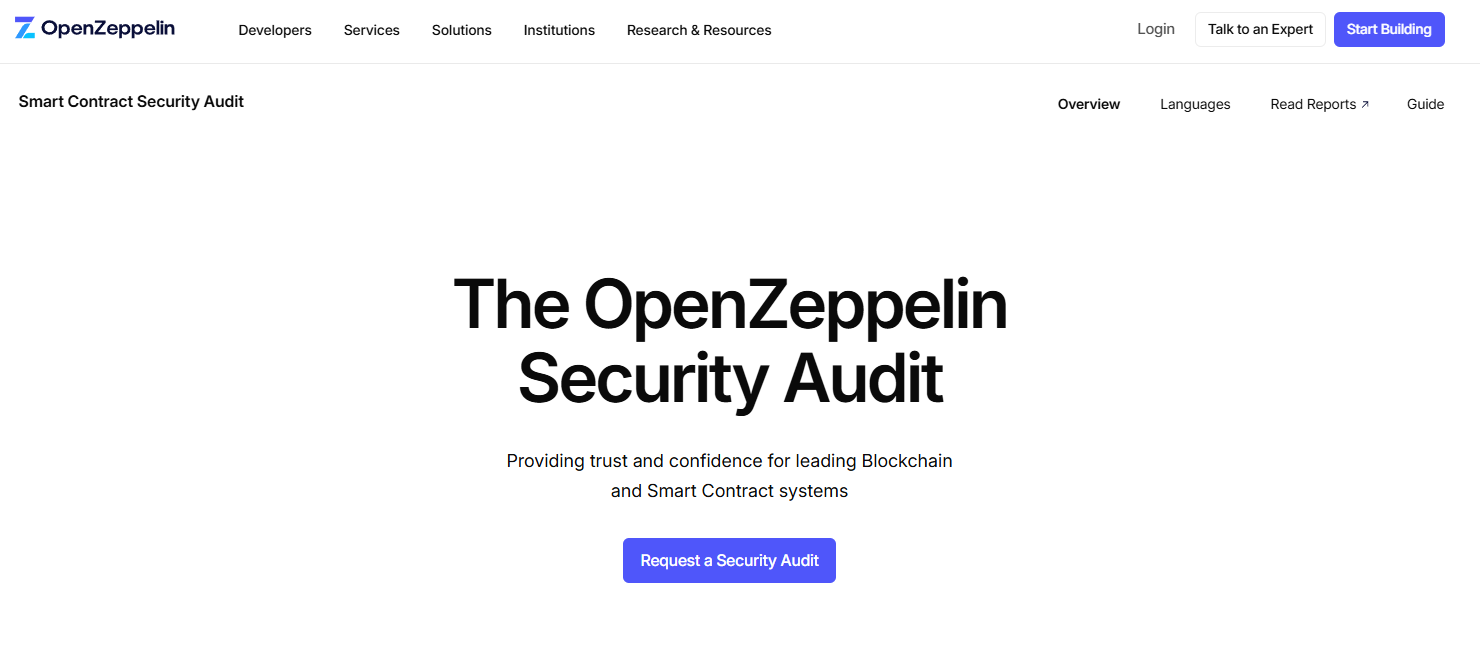
- Why Use It: OpenZeppelin sets the bar for Ethereum security reviews, blending deep code review with fuzzing and invariant testing. Their team maintains widely used libraries and brings ecosystem context to tricky design decisions. Audits are collaborative and issue-tracked end to end. OpenZeppelin+2docs.openzeppelin.com+2
- Best For: DeFi protocols, token standards/bridges, ZK/infra components, L2/L3 projects.
- Notable Features: Multi-researcher line-by-line reviews; fuzzing & invariants; Defender integrations; public customer stories.
- Consider If: Demand may affect near-term availability; enterprise pricing.
- Alternatives: ConsenSys Diligence, Sigma Prime
- Regions: Global • Fees/Notes: Quote-based.
2. Trail of Bits — Best for complex, high-risk systems
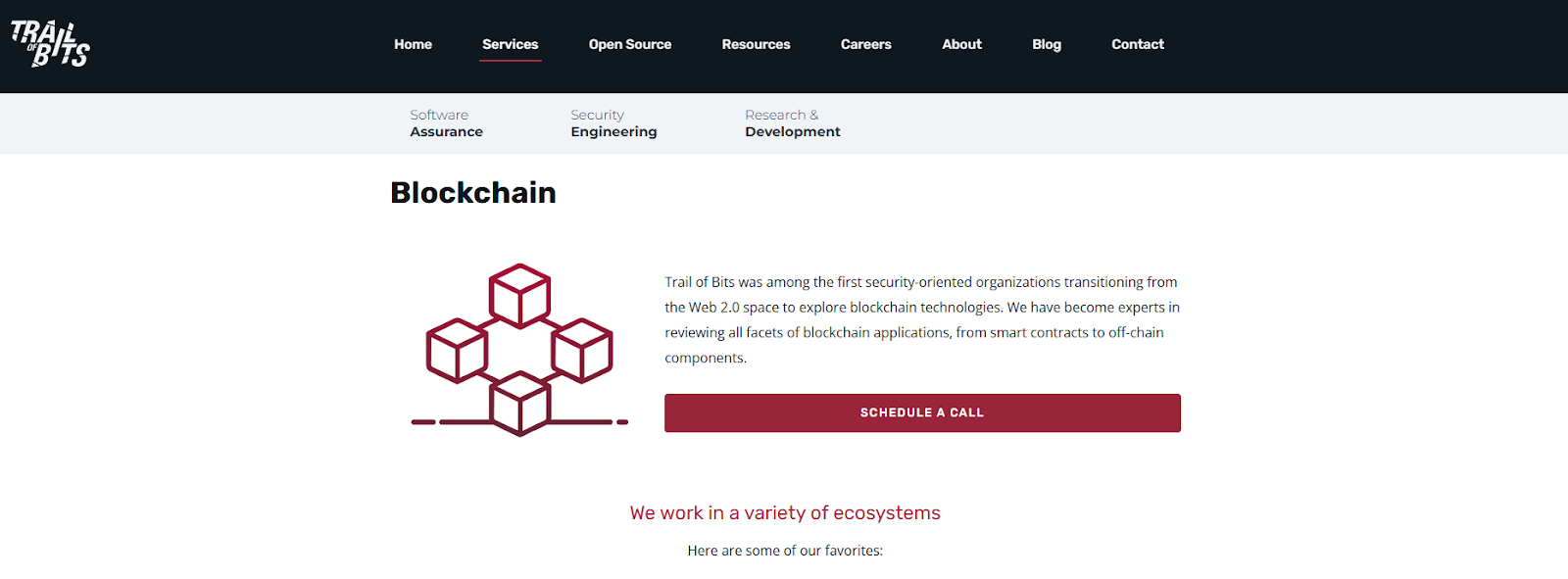
- Why Use It: A security research powerhouse, Trail of Bits excels on complicated protocol architectures and cross-component reviews (on-chain + off-chain). Their publications and tools culture translate into unusually deep findings and actionable remediation paths. Trail of Bits+1
- Best For: Novel consensus/mechanisms, bridges, MEV-sensitive systems, multi-stack apps.
- Notable Features: Custom tooling; broad ecosystem coverage (EVM, Solana, Cosmos, Substrate, Starknet); thorough reporting.
- Consider If: Lead times can be longer; premium pricing.
- Alternatives: Runtime Verification, Zellic
- Regions: Global • Fees/Notes: Quote-based.
3. Sigma Prime — Best for Ethereum core & DeFi heavyweights

- Why Use It: Sigma Prime combines practical auditing with core protocol experience (they build Lighthouse, an Ethereum consensus client), giving them unusual depth in consensus-adjacent DeFi and infra. Strong track record across blue-chip protocols. Sigma Prime+1
- Best For: Lending/AMMs, staking/validators, client-adjacent components, LSTs.
- Notable Features: Deep EVM specialization; transparent technical writing; senior engineering bench.
- Consider If: Primary focus is EVM; limited non-EVM coverage compared to others.
- Alternatives: OpenZeppelin, ChainSecurity
- Regions: Global • Fees/Notes: Quote-based.
4. ConsenSys Diligence — Best for Ethereum builders wanting tooling + audit
- Why Use It: Backed by ConsenSys, Diligence pairs audits with developer-facing tools and education, making it ideal for teams that want process maturity (prep checklists, fuzzing, Scribble specs). Broad portfolio and clear audit portal. Consensys Diligence+2Consensys Diligence+2
- Best For: Early-to-growth stage Ethereum teams, rollup apps, token launches.
- Notable Features: Audit portal; Scribble specification; fuzzing; practical prep guidance.
- Consider If: Primarily Ethereum; non-EVM work may require scoping checks.
- Alternatives: OpenZeppelin, ChainSecurity
- Regions: Global • Fees/Notes: Quote-based.
5. ChainSecurity — Best for complex DeFi mechanisms & institutions
- Why Use It: Since 2017, ChainSecurity has audited many flagship DeFi protocols and works with research institutions and central banks—useful for mechanism-dense systems and compliance-sensitive partners. Public report library is extensive. chainsecurity.com+1
- Best For: Lending/leverage, automated market design, enterprise & research tie-ups.
- Notable Features: Senior formal analysis; large library of public reports; mechanism design experience.
- Consider If: Scheduling can book out during heavy DeFi release cycles.
- Alternatives: Sigma Prime, Runtime Verification
- Regions: Global • Fees/Notes: Quote-based.
6. Runtime Verification — Best for formal methods & proofs
- Why Use It: RV applies mathematical modeling to verify contract behavior—ideal when correctness must be proven, not just reviewed. Transparent duration guidance and verification-first methodology stand out for high-assurance finance and bridges. runtimeverification.com+1
- Best For: Bridges, L2/L3 protocols, safety-critical DeFi, systems needing formal guarantees.
- Notable Features: Design modeling; proof-oriented analysis; published methodology; verification experts.
- Consider If: Formal methods add time/scope; ensure timelines fit launch plans.
- Alternatives: Trail of Bits, ChainSecurity
- Regions: Global • Fees/Notes: Time/cost scale with LoC & rigor.
7. Spearbit (via Cantina) — Best for assembling elite ad-hoc review teams
- Why Use It: Spearbit curates a network of top security researchers and spins up tailored teams for high-stakes reviews. Public “Spearbook” docs outline a transparent process and base rates—useful for planning and stakeholder alignment. docs.spearbit.com+1
- Best For: Protocols needing niche expertise (ZK, MEV, Solana, Cosmos) or rapid talent assembly.
- Notable Features: Researcher leaderboard; portfolio of reports; flexible scoping; public methodology.
- Consider If: Marketplace model—experience can vary; align on leads and scope early.
- Alternatives: Zellic, Trail of Bits
- Regions: Global • Fees/Notes: Base rate guidance published; final quotes vary.
8. Zellic — Best for offensive-security depth & cross-ecosystem coverage
- Why Use It: Founded by offensive researchers, Zellic emphasizes real-world exploit paths and releases practical research/tools (e.g., Masamune). Strong results across EVM, cross-chain, and high-value targets. zellic.io+2zellic.io+2
- Best For: Cross-chain systems, DeFi with complicated state machines, performance-critical code.
- Notable Features: Offensive mindset; tool-assisted reviews; transparent research blog.
- Consider If: Premium scope; verify bandwidth for urgent releases.
- Alternatives: OtterSec, Trail of Bits
- Regions: Global • Fees/Notes: Quote-based.
9. OtterSec — Best for Solana, Move, and high-velocity shipping teams
- Why Use It: OtterSec partners closely with fast-shipping teams across Solana, Sui, Aptos, and EVM, with a collaborative style and visible customer logos across top ecosystems. Useful when you need pragmatic feedback loops and retests. OtterSec+1
- Best For: Solana & Move projects, cross-chain bridges, wallets, DeFi apps.
- Notable Features: Holistic review method; $1B+ in vulnerabilities patched (self-reported); active blog & reports.
- Consider If: Verify scope for non-Move/Solana; high demand seasons can fill quickly.
- Alternatives: Zellic, Halborn
- Regions: Global • Fees/Notes: Quote-based.
10. Halborn — Best for enterprise-grade programs & multi-service security
- Why Use It: Halborn serves both crypto-native and financial institutions with audits, pentesting, and advisory; SOC 2-type attestations and steady cadence of public assessments support enterprise procurement. Halborn+1
- Best For: Exchanges, fintechs, large DeFi suites, and teams needing full-stack security partners.
- Notable Features: Audit portal & reports; enterprise processes; broader security services.
- Consider If: Quote-based pricing; confirm dedicated smart-contract reviewers for your stack.
- Alternatives: ConsenSys Diligence, Trail of Bits
- Regions: Global • Fees/Notes: Quote-based.
Decision Guide: Best By Use Case
- Ethereum DeFi blue-chips: OpenZeppelin, Sigma Prime
- High-assurance/formal proofs: Runtime Verification, ChainSecurity
- Novel mechanisms / complex cross-stack: Trail of Bits
- Rapid team assembly / niche experts (ZK/MEV): Spearbit
- Solana & Move ecosystems: OtterSec, Zellic
- Enterprise programs & multi-service: Halborn, ConsenSys Diligence
- Audit + developer tooling/process: ConsenSys Diligence, OpenZeppelin
How to Choose the Right Smart Contract Auditors (Checklist)
- Confirm chain coverage (EVM/Solana/Cosmos/Move/ZK) and prior similar audits.
- Review public reports for depth, reproductions, and clarity of recommendations.
- Ask about fuzzing/invariants and formal methods on high-risk components.
- Validate availability & timelines vs. your launch and retest windows.
- Align on scope & deliverables (threat model, PoCs, retest, disclosure).
- Clarify pricing (fixed/LoC-based, review period, retests).
- Check secure comms (issue trackers, PGP, private repos) and follow-up support.
- Red flags: “rubber-stamp” promises, guaranteed pass, or refusal to publish a report summary.
Use Token Metrics With Any Auditor
- AI Ratings screen sectors and assets before you commit dev cycles.

- Narrative Detection spots momentum so audits align with market timing.
- Portfolio Optimization balances audited vs. unaudited exposure.
- Alerts/Signals track unlocks, governance, and risk events post-launch.
Workflow: Research → Select auditor → Execute fixes/retest → Monitor with alerts.
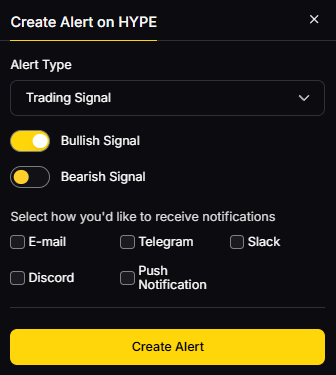
Primary CTA: Start free trial

Security & Compliance Tips
- Enforce 2FA/hardware keys across repos and infra.
- Separate ops wallets from treasury; use MPC or HSM where appropriate.
- Align with KYC/AML and disclosures if raising or listing.
- Use bug bounties and continuous scanning after the audit.
- Practice key rotation, access reviews, and incident-response drills.
This article is for research/education, not financial advice.
Beginner Mistakes to Avoid
- Treating an audit as a one-time checkbox instead of an iterative security program.
- Scoping only Solidity without reviewing off-chain components and oracles.
- Shipping major changes post-audit without a delta review.
- Publishing reports without fix verification.
- Ignoring test coverage, fuzzing, and invariant specs.
FAQs
What does a smart contract audit include?
Typically: architecture review, manual code analysis by multiple researchers, automated checks (linters, fuzzers), proof-of-concept exploits for issues, and a final report plus retest. Depth varies by scope and risk profile.
How long does an audit take?
From a few weeks to several months, depending on code size, complexity, and methodology (e.g., formal verification can extend timelines). Plan for time to remediate and retest before mainnet.
How much do audits cost?
Pricing is quote-based and driven by complexity, deadlines, and team composition. Some networks (e.g., Spearbit) publish base rate guidance to help with budgeting.
Do I need an audit if my code is forked?
Yes. Integration code, parameter changes, and new attack surfaces (bridges/oracles) can introduce critical risk—even if upstream code was audited.
Should I publish my audit report?
Most credible teams publish at least a summary. Public reports aid trust, listings, and bug bounty participation—while enabling community review.
What if we change code after the audit?
Request a delta audit and update your changelog. Major logic changes merit a retest; minor refactors may need targeted review.
Conclusion + Related Reads
Choosing the right auditor depends on your stack, risk tolerance, and timelines. For Ethereum-first teams, OpenZeppelin, Sigma Prime, and ConsenSys Diligence stand out. If you need high-assurance proofs or tricky mechanisms, look to Runtime Verification, ChainSecurity, or Trail of Bits. Solana/Move builders often pick OtterSec or Zellic. For flexible, elite review pods, Spearbit is strong.
Related Reads:
- Best Cryptocurrency Exchanges 2025
- Top Derivatives Platforms 2025
- Top Institutional Custody Providers 2025
Sources & Update Notes
We reviewed official audit/service pages, public report libraries, and process/rate disclosures for recency and scope fit. Third-party datasets were used only for cross-checks (no external links included). Updated September 2025.
- OpenZeppelin: Security Audits page; Defender Audit module; company homepage. OpenZeppelin+2docs.openzeppelin.com+2
- Trail of Bits: Blockchain services page; recent audit/industry posts. Trail of Bits+1
- Sigma Prime: Company site and engineering blog. Sigma Prime+1
- ConsenSys Diligence: Services page; audits portal; audit prep guidance. Consensys Diligence+2Consensys Diligence+2
- ChainSecurity: Services and report library. chainsecurity.com+1
- Runtime Verification: Smart contract audits; methodology pages. runtimeverification.com+1
- Spearbit (Cantina): Public process docs; base rate guidance. docs.spearbit.com+1
- Zellic: Services and research/blog (Masamune). zellic.io+2zellic.io+2
- OtterSec: Homepage, client examples, and contact/reports hub. OtterSec+1
Halborn: Homepage; audits & recent report examples; team/enterprise posture. Halborn+2Halborn+2

Best Newsletters & Independent Analysts (2025)
%201.svg)
%201.svg)
Why Crypto Newsletters & Independent Analysts Matter in September 2025
In a market that never sleeps, the best crypto newsletters 2025 help you filter noise, spot narratives early, and act with conviction. In one line: a great newsletter or analyst condenses complex on-chain, macro, and market structure data into clear, investable insights. Whether you’re a builder, long-term allocator, or active trader, pairing independent analysis with your own process can tighten feedback loops and reduce decision fatigue. In 2025, ETF flows, L2 expansion, AI infra plays, and global regulation shifts mean more data than ever. The picks below focus on consistency, methodology transparency, breadth (on-chain + macro + market), and practical takeaways—blending independent crypto analysts with data-driven research letters and easy-to-digest daily briefs.
Secondary intents we cover: crypto research newsletter, on-chain analysis weekly, and “who to follow” for credible signal over hype.
How We Picked (Methodology & Scoring)
- Scale & authority (liquidity = 30%): Reach, frequency, and signals that move or benchmark the market (ETF/flows, L2 metrics, sector heat).
- Security & transparency (25%): Clear disclosures, methodology notes, sources of data; links to security/research pages when applicable.
- Coverage (15%): On-chain + macro + sector breadth; BTC/ETH plus L2s, DeFi, RWAs, AI infra, and alt cycles.
- Costs (15%): Free tiers, reasonable paid options, and clarity on what’s gated.
- UX (10%): Digestible summaries, archives, and skim-ability.
- Support (5%): Reliability of delivery, community, and documentation.
Data sources used: official sites/newsletter hubs, research/security pages, and widely cited datasets (Glassnode, Coin Metrics, Kaiko, CoinShares) for cross-checks. Last updated September 2025.
Top 10 Crypto Newsletters & Independent Analysts in September 2025
1. Bankless — Best for Daily Crypto & Web3 Digests
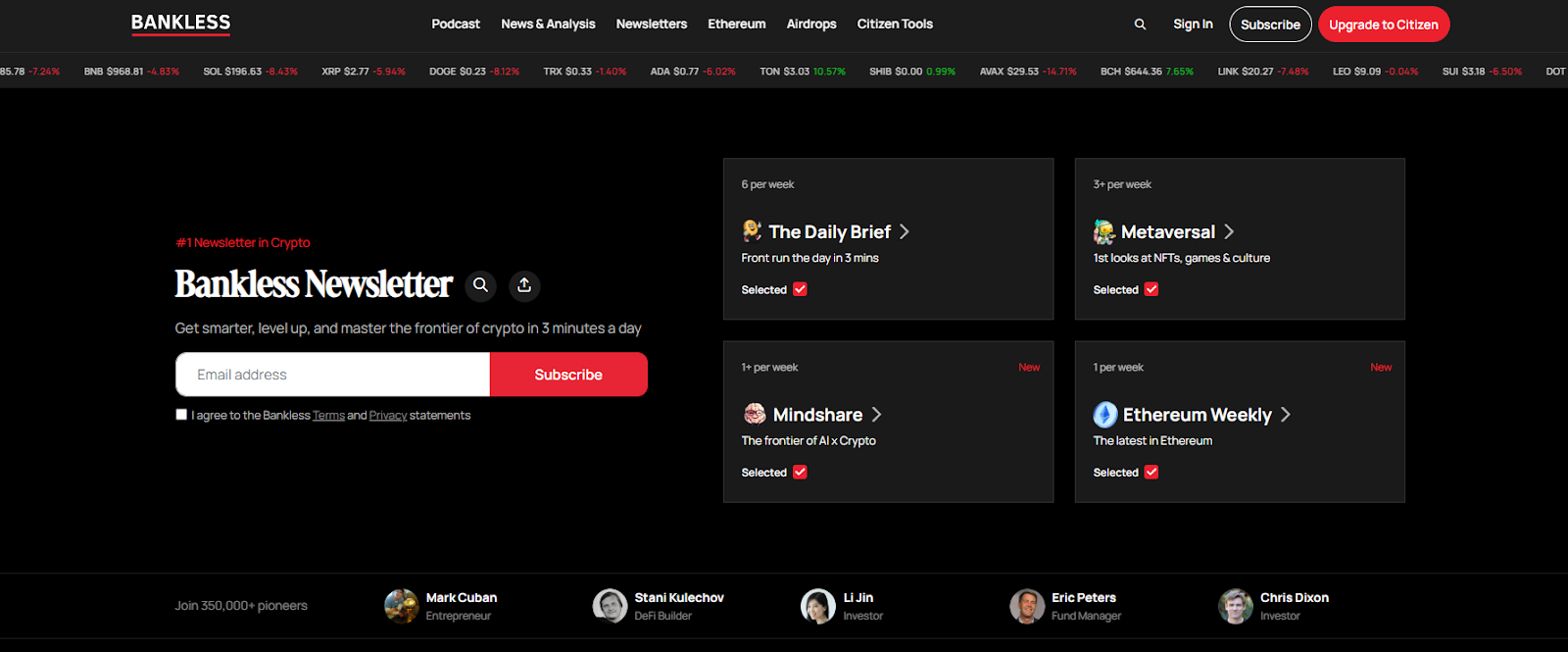
- Why Use It: Bankless offers an approachable Daily Brief and deeper thematic series that balance top-of-funnel news with actionable context. If you want a consistent, skimmable daily pulse on crypto, DeFi, and Ethereum, this is a staple.
- Best For: Busy professionals, founders, new-to-intermediate investors, narrative spotters.
- Notable Features: Daily Brief; weekly/thematic issues; Ethereum-centric takes; large archive; clear disclosures.
- Fees Notes: Generous free tier; optional paid communities/products.
- Regions: Global
- Alternatives: The Defiant, Milk Road
- Consider If: You want daily breadth and a friendly voice more than deep quant.
2. The Defiant — Best for DeFi-Native Coverage
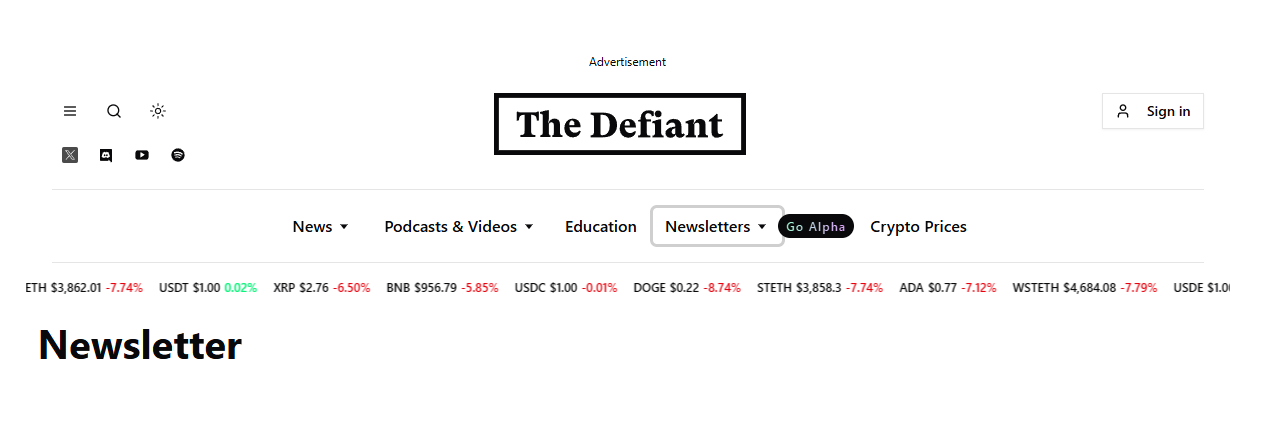
- Why Use It: The Defiant’s daily/weekly letters and DeFi Alpha cut straight to on-chain happenings, new protocols, and governance. Expect fast DeFi coverage with practical trader/investor context.
- Best For: DeFi power users, yield seekers, DAO/governance watchers.
- Notable Features: DeFi-focused daily; weekly recaps; Alpha letter; strong reporting cadence.
- Fees Notes: Free newsletter options; premium research tiers available.
- Regions: Global
- Alternatives: Bankless, Delphi Digital
- Consider If: Your focus is DeFi first and you want timely protocol insights.
3. Messari – Unqualified Opinions — Best for Institutional-Grade Daily Takes
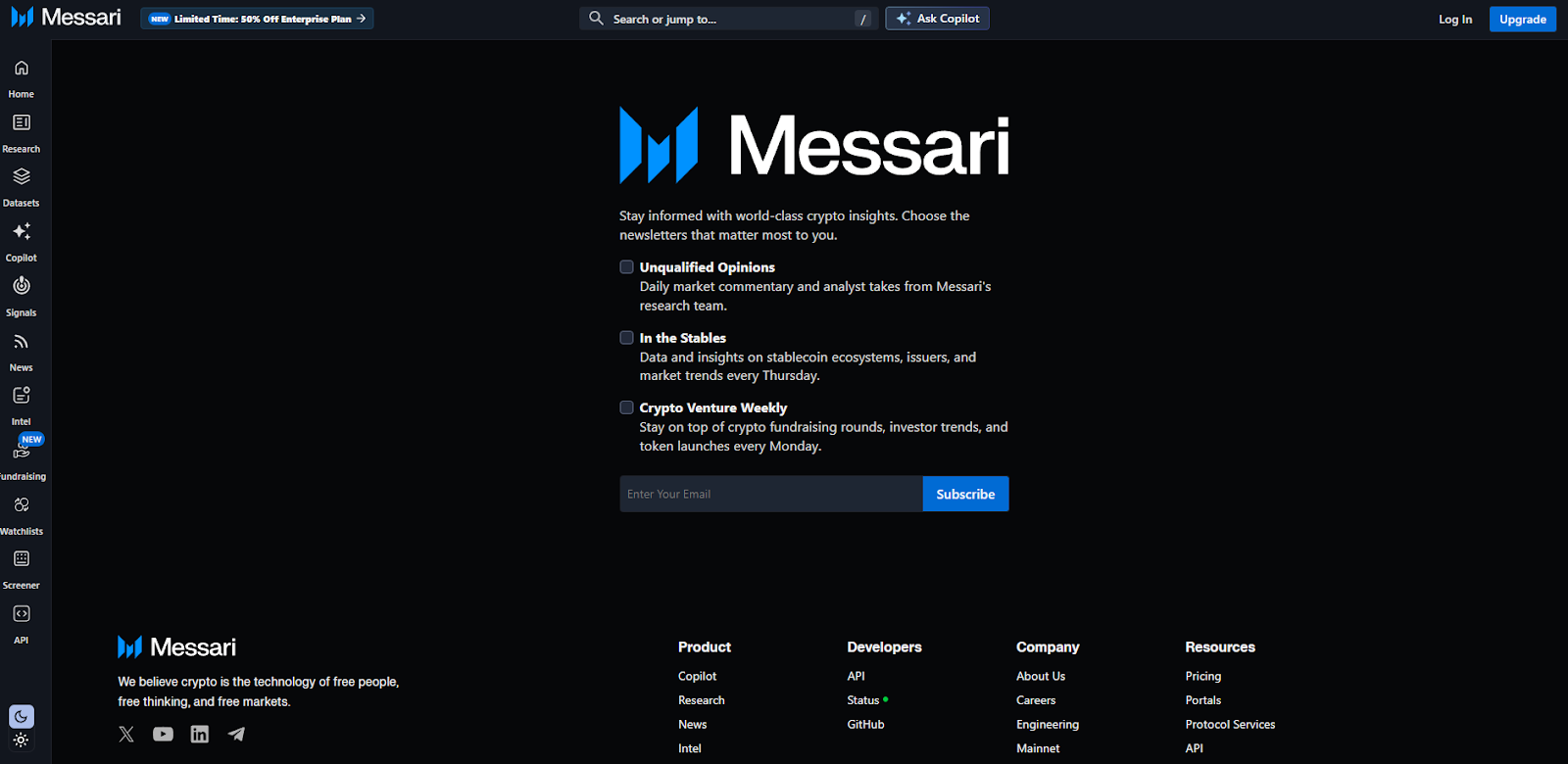
- Why Use It: Messari’s daily market commentary and analyst notes are crisp, data-aware, and aligned with institutional workflows. Great for staying current on stablecoins, venture, and macro-market structure.
- Best For: Funds, analysts, founders, policy/market observers.
- Notable Features: Daily commentary; stablecoin weekly; venture weekly; archives; research ecosystem.
- Fees Notes: Free newsletters with deeper research available to paying customers.
- Regions: Global
- Alternatives: Delphi Digital, Coin Metrics SOTN
- Consider If: You value concise institutional context over tutorials.
4. Delphi Digital – Delphi Alpha — Best for Thematic Deep Dives
- Why Use It: Delphi marries thematic research (AI infra, gaming, L2s) with market updates and timely unlocks of longer reports. Great when you want conviction around medium-term narratives.
- Best For: Venture/allocators, founders, narrative investors.
- Notable Features: “Alpha” newsletter; report previews; cross-asset views; long-form research.
- Fees Notes: Free Alpha letter; premium research memberships available.
- Regions: Global
- Alternatives: Messari, The Defiant
- Consider If: You prefer thesis-driven research over daily headlines.
5. Glassnode – The Week On-Chain — Best for On-Chain Market Structure
- Why Use It: The industry’s flagship weekly on-chain letter explains BTC/ETH supply dynamics, holder cohorts, and cycle health with charts you’ll see cited everywhere.
- Best For: Traders, quants, macro/on-chain hybrid readers.
- Notable Features: Weekly on-chain; clear frameworks; historical cycle context; free subscription option.
- Fees Notes: Free newsletter; paid platform tiers for advanced metrics.
- Regions: Global
- Alternatives: Coin Metrics SOTN, Into The Cryptoverse
- Consider If: You want a single, rigorous on-chain read each week.
6. Coin Metrics – State of the Network — Best for Data-First Research Notes
- Why Use It: SOTN blends on-chain and market data into weekly essays on sectors like LSTs, stablecoins, and market microstructure. It’s authoritative, neutral, and heavily cited.
- Best For: Researchers, desk strategists, product teams.
- Notable Features: Weekly SOTN; special insights; transparent data lineage; archives.
- Fees Notes: Free newsletter; enterprise data products available.
- Regions: Global
- Alternatives: Glassnode, Kaiko Research
- Consider If: You want clean methodology and durable references.
7. Kaiko Research Newsletter — Best for Liquidity & Market Microstructure
- Why Use It: Kaiko’s research distills exchange liquidity, spreads, and derivatives structure across venues—useful for routing, slippage, and institutional execution context.
- Best For: Execution teams, market makers, advanced traders.
- Notable Features: Data-driven notes; liquidity dashboards; exchange/venue comparisons.
- Fees Notes: Free research posts; deeper tiers for subscribers/clients.
- Regions: Global
- Alternatives: Coin Metrics, Messari
- Consider If: You care about where liquidity actually is—and why it moves.
8. CoinShares – Digital Asset Fund Flows & Market Update — Best for ETF/Institutional Flow Watchers
- Why Use It: Weekly Fund Flows and macro wrap-ups help you track institutional positioning and sentiment—especially relevant in the ETF era.
- Best For: Allocators, macro traders, desk strategists.
- Notable Features: Monday flows report; Friday market update; AuM trends; asset/region breakdowns.
- Fees Notes: Free reports.
- Regions: Global (some content segmented by jurisdiction)
- Alternatives: Glassnode, Messari
- Consider If: You anchor decisions to capital flows and risk appetite.
9. Milk Road — Best for Quick, Conversational Daily Briefs
- Why Use It: A fast, witty daily that makes crypto easier to follow without dumbing it down. Great second screen with coffee—good for catching headlines, airdrops, and memes that matter.
- Best For: Busy professionals, newcomers, social-narrative trackers.
- Notable Features: Daily TL;DR; approachable tone; growing macro/AI crossover.
- Fees Notes: Free newsletter; sponsored placements disclosed.
- Regions: Global
- Alternatives: Bankless, The Defiant
- Consider If: You want speed and simplicity over deep quant.
10. Lyn Alden – Strategic Investment Newsletter — Best for Macro That Actually Impacts Crypto
- Why Use It: Not crypto-only—yet hugely relevant. Lyn’s macro letters cover liquidity regimes, fiscal/monetary shifts, and energy/AI cycles that drive risk assets, including BTC/ETH.
- Best For: Long-term allocators, macro-minded crypto investors.
- Notable Features: Free macro letters; archives; occasional crypto-specific sections; clear frameworks.
- Fees Notes: Free with optional premium research.
- Regions: Global
- Alternatives: Messari, Delphi Digital
- Consider If: You want a macro north star to frame your crypto thesis.
Decision Guide: Best By Use Case
- DeFi-native coverage: The Defiant
- Daily crypto pulse (friendly): Bankless or Milk Road
- Institutional-style daily notes: Messari – Unqualified Opinions
- Thematic, thesis-driven research: Delphi Digital
- On-chain cycle health: Glassnode – Week On-Chain
- Data-first weekly (methodology): Coin Metrics – SOTN
- Liquidity & venue quality: Kaiko Research
- ETF & institutional positioning: CoinShares Fund Flows
- Macro framing for crypto: Lyn Alden
How to Choose the Right Crypto Newsletter/Analyst (Checklist)
- Region/eligibility: confirm signup availability and any paywall constraints.
- Breadth vs. depth: daily skim (news) vs. weekly deep dives (research).
- Data lineage: on-chain and market sources are named and reproducible.
- Fees & value: what’s free vs. gated; consider team needs (PM vs. research).
- UX & cadence: archives, searchable tags, consistent schedule.
- Disclosures: positions, sponsorships, methodology explained.
- Community/support: access to Q&A, office hours, or active forums.
- Red flags: vague performance claims; undisclosed affiliations.
Use Token Metrics With Any Newsletter/Analyst
- AI Ratings to screen sectors/tokens surfacing in the letters you read.

- Narrative Detection to quantify momentum behind themes (L2s, AI infra, RWAs).
- Portfolio Optimization to size convictions with risk-aware allocations.
- Alerts/Signals to time entries/exits as narratives evolve.
Workflow: Research in your favorite newsletter → shortlist in Token Metrics → execute on your venue of choice → monitor with Alerts.
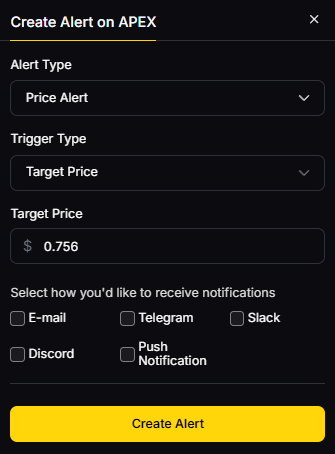
Primary CTA: Start free trial

Security & Compliance Tips
- Enable 2FA on your email client and any research platform accounts.
- Verify newsletter domains and unsubscribe pages to avoid phishing.
- Respect KYC/AML and regional rules when acting on research.
- For RFQs/execution, confirm venue liquidity and slippage.
- Separate reading devices from hot-wallets; practice wallet hygiene.
This article is for research/education, not financial advice.
Beginner Mistakes to Avoid
- Treating a newsletter as a signal service—use it as input, not output.
- Ignoring methodology and disclosures.
- Chasing every narrative without a sizing framework.
- Subscribing to too many sources—prioritize quality over quantity.
- Not validating claims with primary data (on-chain/flows).
FAQs
What makes a crypto newsletter “best” in 2025?
Frequency, methodological transparency, and the ability to translate on-chain/macro signals into practical takeaways. Bonus points for archives and clear disclosures.
Are the top newsletters free or paid?
Most offer strong free tiers (daily or weekly). Paid tiers typically unlock deeper research, models, or community access.
Do I need both on-chain and macro letters?
Ideally yes—on-chain explains market structure; macro sets the regime (liquidity, rates, growth). Pairing both creates a more complete view.
How often should I read?
Skim dailies (Bankless/Milk Road) for awareness; reserve time weekly for deep dives (Glassnode/Coin Metrics/Delphi).
Can newsletters replace analytics tools?
No. Treat them as curated insight. Validate ideas with your own data and risk framework (Token Metrics can help).
Which is best for ETF/flows?
CoinShares’ weekly Fund Flows is the go-to for institutional positioning, complemented by Glassnode/Coin Metrics on structure.
Conclusion + Related Reads
If you want a quick pulse, pick a daily (Bankless or Milk Road). For deeper conviction, add one weekly on-chain (Glassnode or Coin Metrics) and one thesis engine (Delphi or Messari). Layer macro (Lyn Alden) to frame the regime, and use Token Metrics to quantify what you read and act deliberately.
Related Reads:
- Best Cryptocurrency Exchanges 2025
- Top Derivatives Platforms 2025
- Top Institutional Custody Providers 2025
Sources & Update Notes
We reviewed each provider’s official newsletter hub, research pages, and recent posts to confirm availability, cadence, and focus. Updated September 2025 with the latest archives and program pages. Key official references: Bankless newsletter hub Bankless+2Bankless+2; The Defiant newsletter page The Defiant+1; Messari newsletter hub and Unqualified Opinions pages Messari+2messari.substack.com+2; Delphi Digital newsletter page and research site Delphi Digital+2delphidigital.io+2; Glassnode Week On-Chain hub and latest issue insights.glassnode.com+2Glassnode+2; Coin Metrics SOTN hub and archive Coin Metrics+2Coin Metrics+2; Kaiko research/newsletter hub and company site Kaiko Research+1; CoinShares Fund Flows & Research hubs (US/global) and latest weekly example CoinShares+2CoinShares+2; Milk Road homepage and social proof Milk Road+1; Lyn Alden newsletter/archive pages and 2025 issues Lyn Alden+4Lyn Alden+4Lyn Alden+4.

Top Education Platforms & Courses for Crypto (2025)
%201.svg)
%201.svg)
Why Crypto education platforms & courses Matter in September 2025
Crypto moves fast—and the gap between hype and real skills can be costly. If you’re evaluating the best crypto courses or structured paths to go from zero to fluent (or from power user to builder), the right program can compress months of trial-and-error into weeks. In short: a crypto education platform is any structured program, course catalog, or academy that teaches blockchain, Web3, or digital-asset topics with clear outcomes (e.g., literacy, developer skills, startup readiness).
This guide curates 10 credible options across beginner literacy, smart-contract engineering, and founder tracks. We blend SERP research with hands-on criteria so you can match a course to your goals, time, and budget—without the fluff.
How We Picked (Methodology & Scoring)
- Curriculum depth & rigor (30%): Syllabi clarity, assessments, capstones, recognized instructors.
- Credibility & security posture (25%): Transparent teams, reputable institutions, security topics baked in.
- Coverage & specialization (15%): Breadth (BTC, ETH, DeFi, NFTs, security) plus specialist tracks (Solidity, oracles, ZK).
- Costs & access (15%): Free tiers, scholarships, value per hour, certificates.
- UX & learning experience (10%): In-browser coding, cohort support, community, multilingual content.
- Support & outcomes (5%): Mentorship, career support, community reach.
Data sources: official provider pages (program docs, security/FAQ, curriculum), plus widely cited market datasets for cross-checks only. Last updated September 2025.
Top 10 Crypto education platforms & courses in September 2025
1. Coursera — “Bitcoin and Cryptocurrency Technologies” (Princeton) — Best for academic foundations
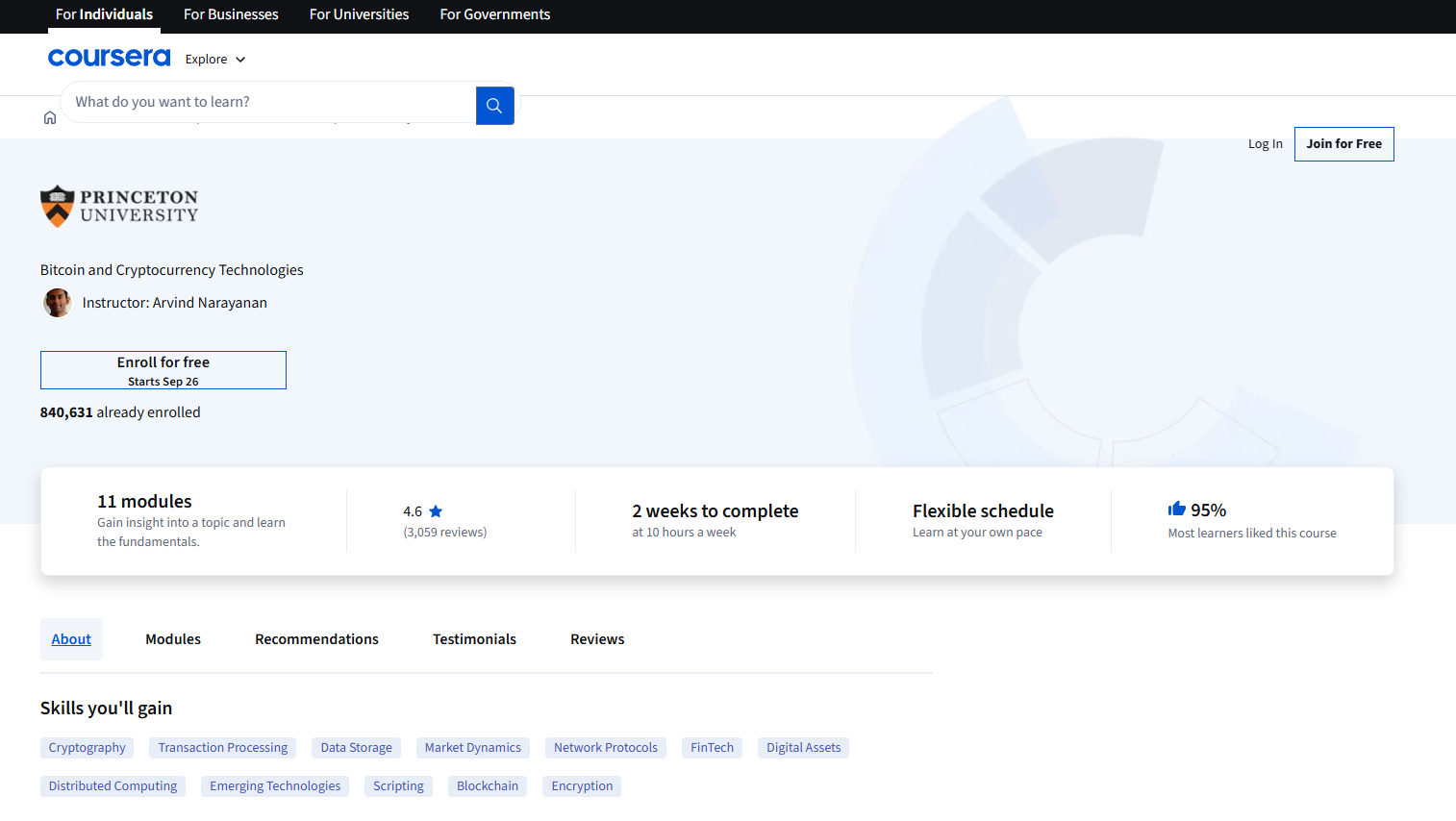
- Why Use It: A seminal university course that demystifies Bitcoin and core crypto concepts with a rigorous, vendor-neutral lens. Clear lectures and assessments make it ideal for newcomers who want trustworthy fundamentals. Coursera
- Best For: Beginners, product managers, compliance/finance pros, technical leaders needing conceptual grounding.
- Notable Features: University-backed syllabus; security/anonymity modules; future/regulation perspectives; conceptual foundations for building. Princeton Online
- Consider If: You prefer hands-on Solidity right away—this is theory-first.
- Alternatives: edX (Berkeley), Coinbase Learn.
- Regions: Global. Fees Notes: Coursera pricing varies by locale.
2. edX — Berkeley Blockchain Fundamentals — Best for university-brand plus survey depth

- Why Use It: UC Berkeley’s professional certificate pairs an overview of blockchain and crypto with academic rigor and clear learning paths. Good bridge between literacy and technical depth. edX+1
- Best For: Cross-functional teams, MBA/finance learners, policy/ops, curious devs.
- Notable Features: Recognized university credential; modular courses; wide topical span across Bitcoin, Ethereum, and applications. edX
- Consider If: You need coding-heavy, cohort-based Solidity training now.
- Alternatives: Coursera (Princeton), ConsenSys Academy.
- Regions: Global. Fees Notes: edX offers audit (free) and paid certificate tracks. edX
3. Binance Academy — Best free, multilingual crypto literacy hub

- Why Use It: A large, constantly updated library of beginner-to-intermediate guides, glossaries, and tutorials in many languages—100% free. Binance+1
- Best For: Absolute beginners, non-technical teams, multilingual audiences, fast refreshers.
- Notable Features: Courses + articles + videos; Bitcoin halving hubs; multi-language support; bite-size explainers. Binance
- Consider If: You want a formal certificate or university grade.
- Alternatives: Coinbase Learn, edX.
- Regions: Global. Fees Notes: Free.
4. Coinbase Learn — Best for simple, trusted onboarding
- Why Use It: Friendly entry point with practical “how-to” guides that answer common questions about Bitcoin, Ethereum, NFTs, wallets, and safety. Great for reluctant first-timers. Coinbase+1
- Best For: New investors, finance teams exploring crypto policy, busy executives.
- Notable Features: Step-by-step tutorials; beginner hubs; platform-agnostic primers. Coinbase
- Consider If: You need dev-level skills or a cohort experience.
- Alternatives: Binance Academy, Coursera.
- Regions: Global. Fees Notes: Free learning content.
5. ConsenSys Academy — Best for Ethereum developer bootcamps
- Why Use It: The training arm of a core Ethereum company, with cohort-based programs, mentor access, and security best practices baked in. Strong for professionalizing Solidity skills. Consensys - The Ethereum Company+1
- Best For: Software engineers, Web2 devs crossing to Web3, career switchers.
- Notable Features: Flagship Blockchain Developer Bootcamp; team projects; office hours; certificates. Consensys - The Ethereum Company
- Consider If: You need completely free self-paced content.
- Alternatives: Alchemy University, Moralis Academy.
- Regions: Global (online). Fees Notes: Paid bootcamps; prices vary. Consensys - The Ethereum Company
6. Alchemy University — Best free, hands-on Solidity path
- Why Use It: A popular builder track with free in-browser coding, projects, and a modern Solidity course aligned to current compiler versions. Alchemy+1
- Best For: Aspiring smart-contract devs, hackathon teams, self-paced builders.
- Notable Features: Free Solidity course; code-along projects; hackathons; JS + Ethereum tracks. Alchemy
- Consider If: You want a cohort and instructor mentorship.
- Alternatives: ConsenSys Academy, Encode Club.
- Regions: Global. Fees Notes: Free.
7. Moralis Academy — Best for blended dev + trading curriculum
- Why Use It: Combines structured dev courses with trading strategy content and a community. Offers free starts with optional Pro for deeper tracks. academy.moralis.io
- Best For: Builders who also want market context; ambitious beginners.
- Notable Features: Step-by-step tracks; community; trading modules; ties to Moralis dev tooling. Moralis | Enterprise-Grade Web3 APIs
- Consider If: You prefer purely academic or vendor-neutral content.
- Alternatives: Alchemy University, Binance Academy.
- Regions: Global. Fees Notes: Free tier; paid plans available. academy.moralis.io
8. University of Nicosia (UNIC) — Free MOOCs + MSc in Blockchain/Digital Currency — Best for formal academia & credentials
- Why Use It: UNIC pioneered a dedicated MSc in Digital Currency and runs free entry MOOCs—a long-standing academic pathway in crypto. University of Nicosia+1
- Best For: Career-switchers wanting formal credentials; policymakers; educators.
- Notable Features: Free MOOC intros; postgraduate degrees; broad coverage across tech, economic, and legal aspects. University of Nicosia
- Consider If: You need short, purely practical dev sprints.
- Alternatives: edX (Berkeley), Coursera.
- Regions: Global (online). Fees Notes: MOOCs free; degree programs paid. University of Nicosia
9. Chainlink Education & Bootcamps — Best for oracle, data, and hybrid smart-contract skills
- Why Use It: If you’re building with real-world data, Chainlink’s education hub and instructor-led bootcamps teach oracle patterns, cross-chain messaging, and production-grade smart contracts. Chainlink+1
- Best For: Devs targeting DeFi, on-chain finance, and data-rich dApps.
- Notable Features: Tutorials on NFTs/stablecoins; live bootcamps; developer advocates; ecosystem resources. chainlinkecosystem.com
- Consider If: You want chain-agnostic theory without vendor context.
- Alternatives: Alchemy University, ConsenSys Academy.
- Regions: Global. Fees Notes: Many resources free; bootcamp formats vary.
10. a16z Crypto — Crypto Startup Accelerator (CSX) — Best for founders & operators
- Why Use It: Beyond coding, founders need go-to-market, legal, and product mentorship. CSX offers a cohort model with capital, expert lectures, and crypto-specific startup support. a16z crypto
- Best For: Early-stage founders, PMs, operators validating product-market fit in Web3.
- Notable Features: Curated mentorship network; structured curriculum; demo days; evolution of the original Crypto Startup School into a full accelerator. a16z crypto
- Consider If: You’re pre-idea or not building a company yet—start with literacy/dev courses first.
- Alternatives: Encode Club accelerators, Solana-ecosystem programs.
- Regions: Global (programs periodically in specific cities). Fees Notes: Accelerator terms vary by cohort.
Decision Guide: Best By Use Case
- Academic fundamentals (theory-first): Coursera (Princeton), edX (Berkeley). Coursera+1
- Free multilingual literacy: Binance Academy; Coinbase Learn (simple, practical). Binance+1
- Hands-on Solidity (free): Alchemy University. Alchemy
- Cohort dev bootcamp: ConsenSys Academy. Consensys - The Ethereum Company
- Developer + trading blend: Moralis Academy. academy.moralis.io
- Formal credentials: University of Nicosia (MOOC, MSc). University of Nicosia
- Oracle/data-driven dApps: Chainlink Education/Bootcamps. Chainlink
- Founder/accelerator path: a16z Crypto (CSX). a16z crypto
How to Choose the Right Crypto education platforms & courses (Checklist)
- Confirm level & outcomes (literacy, dev skills, or founder playbook).
- Review syllabus & assessments; look for capstones or code reviews.
- Match specialization (Solidity, ZK, DeFi, security, oracles) to your goal.
- Check costs & time (audit/free vs. paid, cohort dates).
- Evaluate support (mentors, office hours, Discord/Forum).
- Prefer credible institutions/teams; scan FAQs/security sections.
- Red flags: vague outcomes, hard upsells, no instructor transparency.
Use Token Metrics With Any Crypto education platforms & courses
- AI Ratings to screen tokens you’ll study or trade.

- Narrative Detection to spot momentum across sectors.
- Portfolio Optimization to size positions by risk.
- Alerts/Signals to monitor entries/exits as you learn.
Workflow: Research → Choose a course → Practice on sandboxes → Execute with a small wallet → Monitor with Alerts.

Primary CTA: Start free trial.

Security & Compliance Tips
- Enable 2FA and hardware keys on all learning-linked accounts.
- Keep a separate practice wallet; never paste seed phrases into course portals.
- Use reputable docs for KYC/AML topics; understand regional eligibility.
- Practice safe contract deployments on testnets first.
- Document RFQ or OTC steps if your course touches institutional flows.
This article is for research/education, not financial advice.
Beginner Mistakes to Avoid
- Jumping into paid bootcamps before trying free literacy/prep modules.
- Treating dev tutorials as plug-and-play without security reviews.
- Chasing certifications without projects to show.
- Ignoring region/eligibility notes or program timelines.
- Over-indexing on one chain—learn concepts that transfer.
FAQs
What’s the fastest way to start learning crypto in 2025?
Start with a free literacy hub (Binance Academy or Coinbase Learn), then audit a university course (Coursera/edX) before committing to a paid bootcamp. This builds intuition and saves money. Binance+2Coinbase+2
Which course is best if I want to become a Solidity developer?
Alchemy University is a free, hands-on path with in-browser coding; ConsenSys Academy adds mentor-led structure and team projects for professional polish. Alchemy+1
Do I need a formal degree for crypto careers?
Not strictly. A portfolio of projects often trumps certificates, but formal programs like UNIC’s MSc can help for policy, compliance, or academia-adjacent roles. University of Nicosia
Are these programs global and online?
Most are fully online and globally accessible; accelerators like a16z CSX may run cohorts in specific cities, so check the latest cohort details. a16z crypto
Will these courses cover wallet and security best practices?
University and dev bootcamps typically include security modules; literacy hubs also publish safety guides. Always cross-check with official docs and practice in testnets. Consensys - The Ethereum Company+1
Conclusion + Related Reads
If your goal is literacy and safe onboarding, start with Binance Academy or Coinbase Learn; for academic depth, layer in Coursera (Princeton) or edX (Berkeley). Builders should choose Alchemy University (free) and consider ConsenSys Academy for mentor-led polish. For credentials, UNIC stands out. Founders ready to ship and raise should explore a16z Crypto’s CSX.
Related Reads:
- Best Cryptocurrency Exchanges 2025
- Top Derivatives Platforms 2025
- Top Institutional Custody Providers 2025
Sources & Update Notes
We verified each provider’s official pages for curriculum, format, and access. Third-party datasets were used only to cross-check prominence. Updated September 2025.
- Coursera / Princeton — “Bitcoin and Cryptocurrency Technologies” (course page; Princeton overview). Coursera+1
- edX / UC Berkeley — “Blockchain Fundamentals” (program page & course page). edX+1
- Binance Academy — site & topic pages. Binance+1
- Coinbase Learn — Learn hub; tips & tutorials. Coinbase+1
- ConsenSys Academy — Academy overview; Bootcamp details. Consensys - The Ethereum Company+1
- Alchemy University — University overview; Solidity course page. Alchemy+1
- Moralis Academy — Academy site; Moralis developer platform. academy.moralis.io+1
- University of Nicosia — MOOC pages. University of Nicosia+1
- Chainlink — Education hub; Bootcamp page; Learn resources. Chainlink+2Chainlink+2
a16z Crypto — CSX accelerator; CSS history/update. a16z crypto+1


Get Your Brand in Front of 150,000+ Crypto Investors!




 Create Your Free Account
Create Your Free Account9450 SW Gemini Dr
PMB 59348
Beaverton, Oregon 97008-7105 US
.svg)
No Credit Card Required


Online Payment


SSL Encrypted
.png)
Products
Subscribe to Newsletter
Token Metrics Media LLC is a regular publication of information, analysis, and commentary focused especially on blockchain technology and business, cryptocurrency, blockchain-based tokens, market trends, and trading strategies.
Token Metrics Media LLC does not provide individually tailored investment advice and does not take a subscriber’s or anyone’s personal circumstances into consideration when discussing investments; nor is Token Metrics Advisers LLC registered as an investment adviser or broker-dealer in any jurisdiction.
Information contained herein is not an offer or solicitation to buy, hold, or sell any security. The Token Metrics team has advised and invested in many blockchain companies. A complete list of their advisory roles and current holdings can be viewed here: https://tokenmetrics.com/disclosures.html/
Token Metrics Media LLC relies on information from various sources believed to be reliable, including clients and third parties, but cannot guarantee the accuracy and completeness of that information. Additionally, Token Metrics Media LLC does not provide tax advice, and investors are encouraged to consult with their personal tax advisors.
All investing involves risk, including the possible loss of money you invest, and past performance does not guarantee future performance. Ratings and price predictions are provided for informational and illustrative purposes, and may not reflect actual future performance.




%201.svg)

